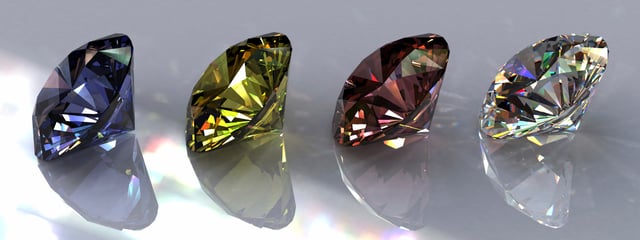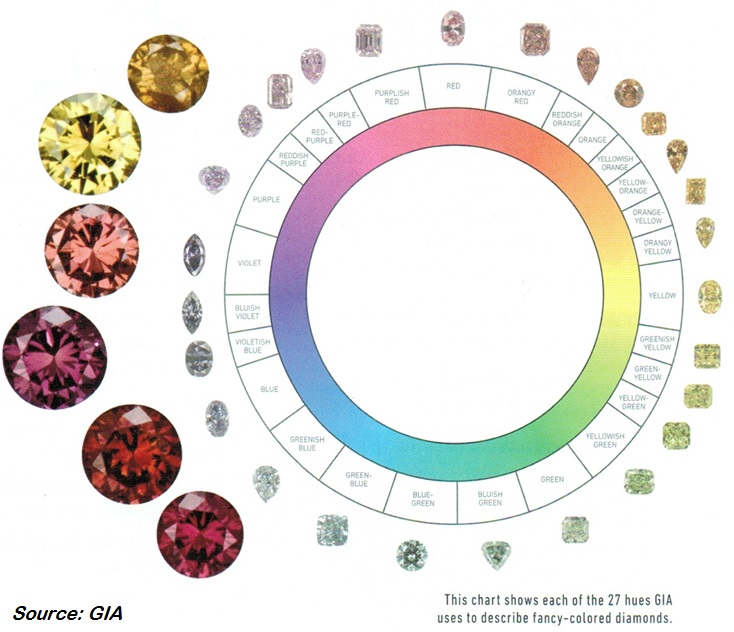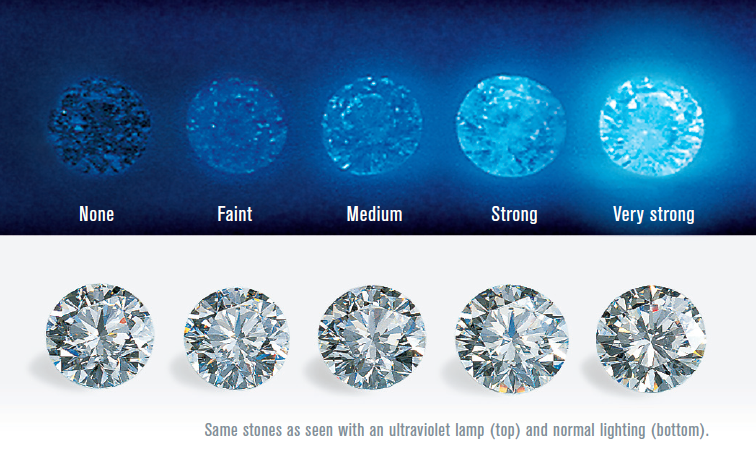
Diamonds come in many colors and many different shades. From white, to striking “fancies,” the choice of diamonds for your customer can be colorless or full of color, depending on their preference. As a diamond retailer, being able to explain the variations in color, while describing the unique qualities of each variant in a positive way, will help your customer choose the diamond they find most beautiful.
White Diamonds and the GIA Grading Scale
In white diamonds, the measure of diamond color is in fact based on the absence of color, with colorless diamonds being the most expensive. According to Blue Nile, “The less color a diamond has, the higher its color grade. After cut, color is generally considered the second most important characteristic when selecting a diamond. This is because the human eye tends to detect a diamond's sparkle (light performance) first, and color second.”
So which color diamond is right for your customer? For the most part, customers buying diamonds for jewelry look to buy white diamonds, but many of them may not be aware that white diamonds come in different shades, from colorless, to the presence of a yellowish tinted color. These tints are due to impurities (most commonly nitrogen) that have been incorporated into the diamond during its formation. Many retailers only carry diamonds with a color grade of J or higher since they are colorless or near-colorless, with color that is usually unnoticeable to the naked eye.


The GIA’s color-grading scale for diamonds is the industry standard. Diamonds are assigned a letter grade based on the amount of yellow present in a diamond.
D diamonds are totally colorless and extremely rare.
F-E diamonds contain minute traces of color that can be identified by a gemologist and these diamonds are also very rare.
H-G diamonds are near-colorless diamonds. Their color is hard to identify unless compared side-by-side against diamonds of better grades. These diamonds generally prove to be an excellent value.
J-I diamonds have a slightly noticeable color or warmth and are usually a good value.
As a rule of thumb, customers usually fall into two categories: traditionalists and value-seekers. Traditionalists looking for colorless diamonds should look for a D-F grade, which has no noticeable color. For a very good value in a diamond with little or no noticeable color to the naked eye, most value-seekers are driven towards a near-colorless grade of G-I.

As a diamond retailer, it’s key to learn what’s important to your customer so that you can guide him to make the best purchase possible.
“Fancy” or Colored Diamonds
Fancy colored diamonds fall into a whole other category from white diamonds. Usually, shoppers looking for fancy colored diamonds have different needs than those looking for white diamonds.
“If gems are the flowers of the mineral kingdom, fancy color diamonds are the orchids” (R. J. Huay, 1817).
These poignant words, written by French mineralogist R.J. Huay, perfectly express the appeal of colored diamonds as exotic and rare beauties of nature. Diamonds come in the largest variety of colors of any known natural gemstone. The two most famous diamonds in the world are colored diamonds. The Tiffany Diamond is a magnificent Fancy Yellow, 128.54 carat diamond and the Hope Diamond is a stunning blue, weighing 45.52 carats.
Colored or "fancy" diamonds are becoming ever more popular with consumers today, thanks in part to celebrities flashing their own colorful stones in fashion magazines and on red carpets. Carrie Underwood flaunts a 12-carat canary yellow diamond engagement ring, and who remembers the amazing 6.1 carat pink diamond engagement ring Ben Affleck gave to Jennifer Lopez for their brief engagement? You can see these and other colored diamond celebrity engagement rings here.
The most common fancy colors are yellow and brown, and the rarest (and therefore most expensive) are pink and blue. Fancy colored diamonds are valued depending on how rare the color is and how intense or saturated it appears.

Factors that Impact the Appearance of a Diamond’s Color
Cut: Diamonds that are not colorless are typically cut to either mask or enhance their natural color when possible. A well-cut round brilliant that is slightly tinted or faint yellow will usually hide its color better than poorly cut stones of the same shape. On the other hand, light yellow and other colored diamonds favor fancier shapes, such as emerald, oval, and pear, which have broader facet arrangements and longer paths for light to travel, which cause the color to appear deeper.
Lighting: A diamond’s color can appear different depending on the type of lighting it is under. For example, many diamonds exhibit fluorescence, which means the diamond's color changes when it is exposed to ultraviolet radiation. About 30% of all diamonds fluoresce blue, which causes diamonds with yellow tint to appear "whiter" than their non-fluorescent equivalents. Learn more about fluorescence here.
Source: GIA
Setting: Diamonds reflect the color of the metal they are set in. An un-mounted diamond that appears slightly yellow to the naked eye will appear “whiter” when mounted in a white metal such as platinum or white gold, while the same stone mounted in yellow or rose gold will appear even more yellow, as the metal enhances the tint of the gem.
Conclusion
Diamond color is a personal preference. While grading systems exist, the bottom line is that most customers will choose a diamond based on budget and the beauty they perceive. By helping your customer to understand and appreciate the value and distinctive beauty of each diamond, working within their budget, and explaining how to achieve the look and hue they desire by utilizing shape, cut, and setting, retailers can help guide their clients to the “right” color diamond for them. And a highly satisfied customer is likely to return and to recommend your superior service to others.


 RapNet Blog
RapNet Blog





